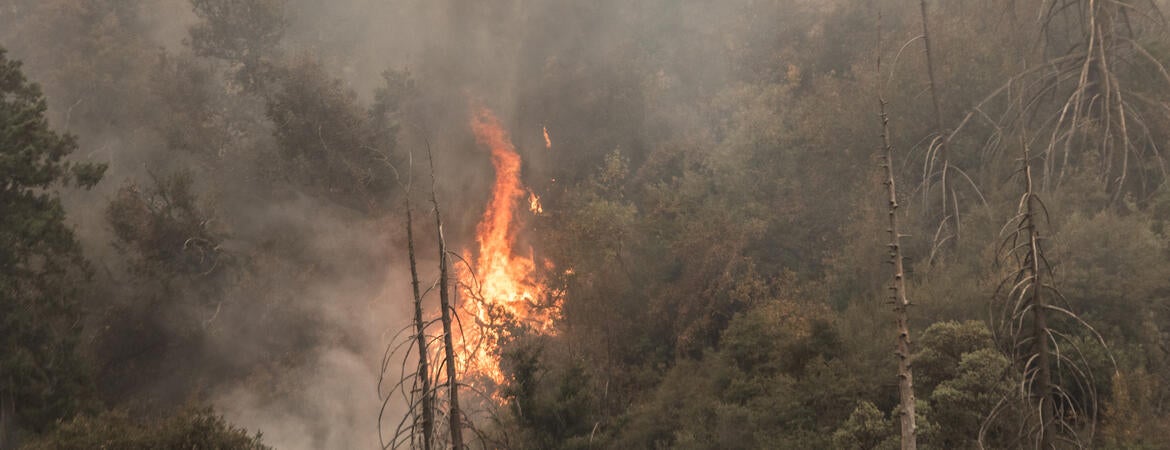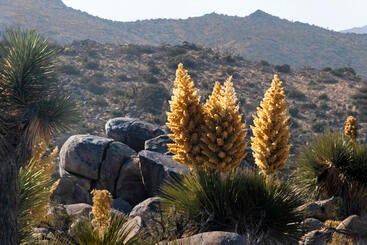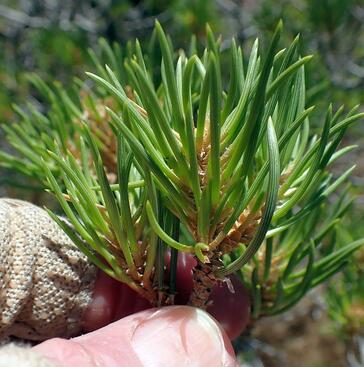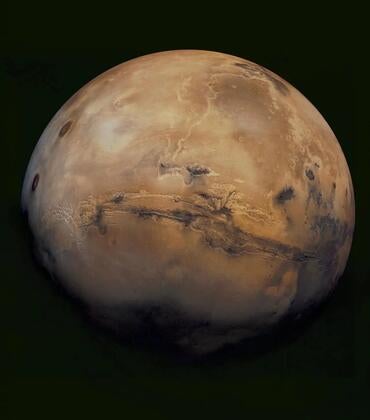
Indigenous land-management strategies have been largely missing from modern attempts to combat the effects of devastating wildfires and worsening climate change in California. A new $7 million grant aims to change that.
The grant project is being led by San Diego State University along with the Climate Science Alliance’s Tribal Working Group, which consists of more than 20 Southern California Tribal governments and communities. For its role, UC Riverside will receive $1 million.
Funded by the state and the University of California, the project establishes the Collaborative of Native Nations for Climate Transformation & Stewardship, or CNNCTS, whose larger goals include multifaceted research and training endeavors.
All wild plants are affected by intensifying drought, heat, fires, and urban development. A goal of the collaborative is to accelerate the preservation of species like oaks and piñon pines that are both key to Indigenous traditions and are also essential for maintaining healthy ecosystems in Southern California.
For example, acorns from multiple species of local oak trees were once a significant dietary staple for area tribes, and they remain an important cultural resource. Oak woodlands also protect soil from erosion, sequester carbon dioxide, help protect drinking water quality, and provide shelter for hundreds of
vertebrate animal species.
“We are looking at how species’ ranges and populations change through time, whether fire and climate will make species likely to disappear from tribal lands, and how best to restore habitats that help these plants persist in support of tribal communities,” said Helen Regan, a UCR biology professor conducting ecological modeling activities for the project.
Simultaneously, scientists at San Diego State University are conducting genetic studies of plants to determine the species and locations that are most resilient to heat or drought. “It may be possible to use seeds from the most drought-resistant plants for restoration or translocation efforts,” Regan said.
A parallel goal of the collaborative is to expand opportunities for students using UC natural reserve lands as living laboratories. Weary of seeing wildlands get bulldozed for roads and buildings, a group of UC scientists banded together in the 1950s to start a network of natural areas managed specifically for academic use.
On these lands, spread throughout California and managed by UC campuses, researchers can measure entire undisturbed ecosystems over long periods. On the lands managed by UCR, the new collaborative will grow an already-established internship program where students will be immersed in a fusion of applied climate science and Indigenous land stewardship practices.
“We’re going to reach out to students who’ve had little previous access to natural areas, with the idea that they’ll get a mentor in public policy, natural sciences or native stewardship,” said Kim Hammond, director of UCR’s natural reserve system. “In doing so, they’ll learn what it means to save the land, what kind of work is being done, and how they can become part of the next generation of landscape guardians.”
The reserves will work with UCR’s Native American Student Programs to help recruit a diverse class of interns to the new program. UCR was the first University of California campus to open an office focused on serving American Indian students and remains only one of a few in the system.
As part of this project, the office will host a native speaker series open to the UCR community, a Healing the Earth Conference featuring Native stewardship practitioners, elders, and other knowledge holders, and field trips for Native students at reserves.
This project has roots in earlier work involving UCR, SDSU, and the Climate Science Alliance Tribal Working group. Ultimately, the partnership represents a paradigm shift in how climate action is visioned, led, and implemented.
Despite having been forcibly removed from their ancestral territories and having been historically excluded from regional land planning processes, tribal nations have remained resilient. They are leading efforts to prepare for extreme climate events and changing conditions using deep traditional ecological knowledge and ties to the land.
“We’re excited to work with native nations, to collaborate and learn from each other,” Hammond said.
(Cover image of Yucaipa wildfire: Jorge Villalba/iStock/Getty)





